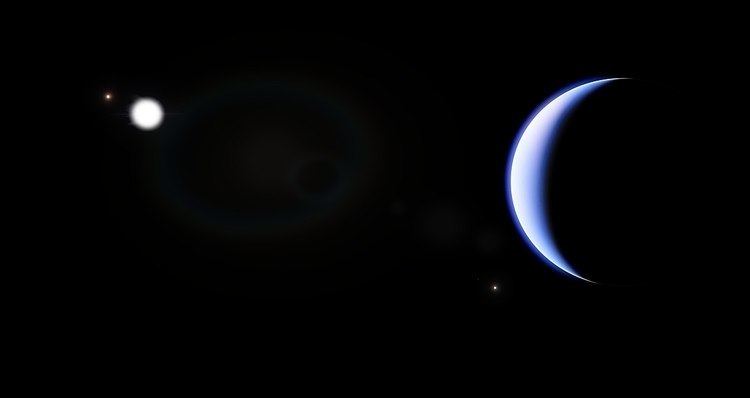Discovery date 15 October 2012 Discovery site Kepler space telescope | Discovery status Published | |
 | ||
[Fe/H] +6999210000000000000♠0.21±0.08 Other detection methods Transit duration variations | ||
PH1b (standing for "Planet Hunters 1"), or by its NASA designation Kepler-64b, is an extrasolar planet found in a circumbinary orbit in the quadruple star system Kepler-64. The planet was discovered by two amateur astronomers from the Planet Hunters project of amateur astronomers using data from the Kepler space telescope with assistance of a Yale University team of international astronomers. The discovery was announced on 15 October 2012. It is the first known transiting planet in a quadruple star system, first known circumbinary planet in a quadruple star system, and the first planet in a quadruple star system found. It was the first confirmed planet discovered by PlanetHunters.org. An independent and nearly simultaneous detection was also reported from a revision of Kepler space telescope data using a transit detection algorithm.
Contents
Star system
The giant planet is Neptune-sized, about 20-55 Earth-masses (M⊕). It has a radius 6.2 times that of Earth's. The star system is 5000 light years from Earth. The planet orbits a close binary, with a more distant binary orbiting at a distance, forming the quadruple star system. The star system has the Kepler Input Catalogue name KIC 4862625 as well as the designation Kepler-64. The close binary (Aa+Ab) that the planet circles has an orbital period of 20 days. They form an eclipsing binary pair. The two stars are (Aa) 1.5 solar mass (M☉) F-type main-sequence star and (Ab) 0.41 M☉ red dwarf. The planet orbits this binary pair in a 138.3-day orbit. The binary pairs have a separation of 1000 AUs. A photometric-dynamical model was used to model the planetary system of the close binary pair. The distant binary (Ba+Bb) have a pair separation of 60 AU. The two stars are (Ba) 0.99 M☉ G-type main-sequence star and (Bb) 0.51 M☉ red dwarf. The quadruple star system has an estimated age of 2 gigayears. The system is located at right ascension 19h 52m 51.624s declination +39° 57′ 18.36″, so also has a 2MASS catalogue entry of 2MASS 19525162+3957183
Discovery
Kian Jek, from San Francisco, and Robert Gagliano, from Cottonwood, Arizona, spotted the signature of the planet in the Kepler data, and it was reported through the PlanetHunters.org program run by Dr. Chris Lintott, from Oxford University. Kian Jek first spotted a light dip indicative of a transit in May 2011. JKD reported a second. Robert Gagliano performed a systematic search, and confirmed the second dip, and found a third, in February 2012. Using this, Kian predicted another transit, and found it. The planet was subsequently detected by eclipsing binary timing variation method. At the time of discovery, it was the sixth known circumbinary planet.
